This is a complete guide that will surely help you identify the various sounds coming from your car wheels and help you fix the issues, if any! Unusual sounds while driving can be attributed to a faulty wheel bearing. In this article, we will describe in detail the various indicators of a faulty wheel bearing, how you can assess the problem, and how to address the issue. No matter if you are a veteran fixing the rides or trying it for the first time, this article will provide you with sufficient knowledge and tools that are helpful in detecting and fixing wheel-bearing issues, enabling a more comfortable and safe drive. So, without further ado, let’s get straight to work and sort out the strange noises from the wheel bearings.
What are the Symptoms of a Bad Wheel Bearing?
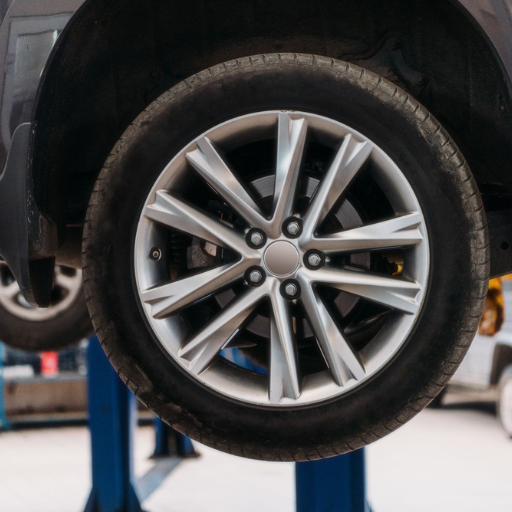
According to the description provided by the availability of information online, there seem to be rather few signs of a problem with the wheel bearing. Those include unusual sounds such as growling, rumbling, or grinding emanating from the wheels. Another basal sign would be a lot of shaking or wobbling in the steering wheel or the car. In addition, the handling of the vehicle may become worse as well; for example, the steering feels very loose or does not respond well to small inputs. It is essential to note, however, that these symptoms can be the cause and affect the wheel bearings, which will not provide a suitable, secure, and usable driving condition and should be looked at immediately when noticed.
How to Diagnose Wheel Bearing Noise
one can determine the noise produced by wheels’ bearings by examining the symptoms and by performing a couple of tests. The first step is to listen to the wheels for any abnormal sounds like rumbling, grinding, or growling. Usually, these sounds indicate that the wheel bearing has either worn out or is damaged. Next, perform a rocking test by jacking up the car in a safe manner and holding the tire at 12 and 6 o’clock. Rock the tire back and forth to check whether there is excessive play for any ‘looseness’ that may suggest that the wheel bearing is bad. Look out for any vibrations or wobbling of the steering wheel and the vehicle while driving it because there are also signs of faults in the wheel bearing. Hence, putting these clues together and doing the wheel joint inspection will allow you to determine the wheel bearing noise and recommend replacement or repair activity as appropriate.
Identifying Bad Wheel Bearing Indicators
I can assist you with finding the signs of a bad wheel bearing. While checking your car, sometimes it is possible to find certain symptoms that pertain to wheel bearing problems. Here are some of them:
- Unusual Noise: In most cases, it is the noise that radiates from the wheels that becomes a clear indication of a bad wheel bearing. Any grinding, growling, or humming noise should be of concern especially if the vehicle is moving. The noise may seem to get louder with speed and may be more pronounced when in a corner.
- Wheel Play or Looseness: Most of the times excessive play or looseness in the wheel becomes yet another indicator. Furthermore, it can be done by lifting the vehicle and trying to turn the wheel to different directions. It may be a wheel bearing defect if there is significant movement or play.
- Vibrations or Wobbling: While driving, be watchful of any vibrations or wobbles as they might be symptoms of faulty wheel bearings. Similarly, if there is any instability in the vehicle or vibrations felt, the condition of the wheel bearings must be checked.
I have posted a few pointers regarding wheel beating maintenance, and they will help you to make your car’s life much easier. If you want to perform a thorough inspection of the wheel bearings, you need to lift the car using a jack. Checking for any excessive wear on the bearing surfaces should also be part of the inspection of the wheel bearing and its hubs. For some reason, if a hub assembly looks damaged, has any big scratches or scrapes, or has any scratches or scrapes, then it does pose a danger to the life of the vehicle. However, if you do check up with the professional you will be able to restore all the damages and make the vehicle much more safe and active. Proper maintenance and routine check-ups can minimize any possibility of the vehicle bearing further harm.
When Wheel Bearings Need Replacement
it wouldn’t be hard to share that there are a number of indicators that warrant a replacement of wheel bearings. This said, never forget that a wheel bearing can be:
- Excessive Play and Vibration: You know it’s time to replace wheel bearings when there is excessive play or looseness observed in the wheel and also if any vibrations can be felt while driving.
- Abnormal Noise: Noisy wheel bearings can be described as growling, rumbling, or grinding, and they are all easy to hear. These noises often get louder the faster the vehicle goes.
- Uneven Tire Wear: The cause of tire wear is certainly wheel bearing failure, which has caused some tires to wear more than others. If tires are worn out more than the normal rate, this could be because of bad wheel bearings.
These particular symptoms, however, should not be considered in isolation since they may also be associated with other problems, and thus, a professional should always be consulted to assess the situation. If in doubt, a reliable mechanic can be called to evaluate the condition of the wheel bearings and recommend appropriate repairs or replacements. Such circumstances are best prevented through routine servicing and inspections to prevent further damage and guarantee the safety and efficiency of the automobile.
How to Confirm if Your Wheel Bearing is Bad
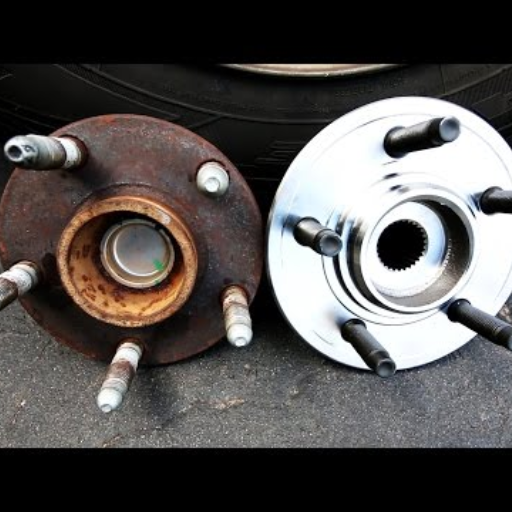
there are a number of signs that can assist you in determining whether your wheel bearing is faulty. Let’s take a look at what you should check for:
- Unusual Noise: If you hear any sounds that are out of the ordinary from your wheels driving, consider listing the cause to be a worn out wheel bearing as that is created with a vehicle speed and because of always growth in vehicle speed the sound is continuous or intermittent growl or rumble.
- Steering Responsiveness: In case you observe a loose or excessive play within your vehicle’s steering wheel that is giving you concern, you are most likely to have a bearing related to the wheel that has a problem, whereas a bad bearing will have a completely negative impact on the steering respond.
- Uneven Tire Wear: Do take note of checking the tires that have a pattern of wear from a once pit into most occasions too much wear on one side of the tire has the likelihood of causing a fault with the wheel bearing by which it causes the entire tire to lean or tilt.
As soon as you notice any of these symptoms, it is important to undergo a professional examination for proper diagnosis of the causative problem. Reach out to any of the trusted mechanics who can assess the wheel bearings and recommend if any repairs or changes are needed. Remember, any sort of damage or malfunction can get worse with time; hence, timely maintenance and examination are highly recommended to keep the vehicle in good and safe working condition.
Using a Jack Stand to Inspect Bearings
I am able to provide my own view on utilizing a jack stand in the inspection of wheel bearings. When it comes to troubleshooting possible problems with the wheel bearings, it would be ideal to use a jack stand that allows for a more in-depth investigation to be carried out in a safe and stable manner. Take a look at the procedure below to help you examine your wheel bearings with the aid of a jack stand:
- First, find a flat and sturdy area that is perfect for raising your vehicle and has room for a jack support.
- Ensure that you park your vehicle on a level surface and also apply the parking brake.
- Put the jack stands underneath the suggested jack lifting area of the car, making sure that it has been fitted properly.
- Using a hydraulic floor jack, lift the vehicle until the wheel is clear above the surface, following necessary guidelines.
- After the wheel is clear of the surface, grab the tire at 12 o’clock and 6 o’clock positions and try to shake it from furt to aft. If any large movements or play is observed, it might be related to a failed or loosened bearing.
- While the wheel is already raised, rotate the wheel with the palm and check for any grinding or rumbling sounds in the wheel. This is discovered due to the weakness in a bearing at a wheel.
- In addition, perform these steps on each wheel that you come across to thoroughly check conduct inspection for all wheel bearings.
Do not forget that if any distressing symptoms are noticed or if there are any doubts about the wheel bearing’s condition, it is always better to contact a qualified mechanic. They are in a position to pinpoint any problems accurately and prescribe reasonable repairs or replacements. Routine checks and servicing are vital to maintaining your vehicle’s safety and functionality. Keep your head in the game and pay attention to ensure that your wheels are in flawless condition.
Listening to Growling Noise While Driving
it is vital to understand the sounds that the vehicle makes, particularly a growling noise when an automobile is in motion. This noise can often be indicative of a defective condition sprouting in one of the wheel bearings. These components carry weight as well as assist the rotation of the wheels which would have been a difficult task otherwise. The perceived sound could be due to a seepage of grease from worn-out wheel bearings or permanently damaged ones. This drawback must be corrected and dealt with immediately since driving around with worn-out wheel bearings can cause extra harm as well as loss of safety. If you feel your Wheel bearings are the reason for the disorderly growling noise , it is advisable to visit a certified mechanic along with the vehicle to clarify the issue and the core center able to fix the car’s problems. One should quickly tackle wheel bearing issues so that the vehicle’s safety and drivability remain up to par.
What Causes Wheel Bearing Failure?
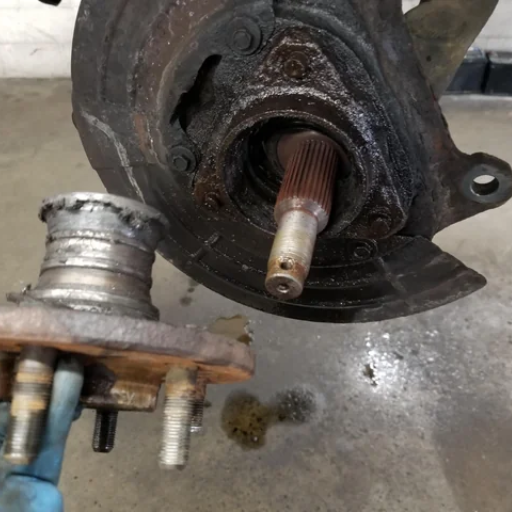
low lubrication, contamination, overloading, and installation errors can lead to wheel bearing failure. Wheel bearings, quite literally, bear the weight of a vehicle as it traverses over surfaces, so all these factors can be the reason for wear and tear of the components over time. Any issue with the wheel bearing should be looked into well in time so that further worsening of the damage is avoided and safety and vehicle performance is maintained.
Common Culprits Behind Bad Wheel Bearing
I haven’t come across a few reasons for poor-quality wheel bearings. Insufficient grease is among the factors that have been known to lead to the failure of the wheel bearings and, in turn, friction and heat buildup. Dirt, water, or any form of debris can also be harmful as they influence wear and corrosion in a higher rate than normal. Overloading can also be a factor, especially when created by heavy loads or rough driving style that puts a greater load than the wheel bearings were designed for, and hence, failure will occur before expected. Likewise, incorrect installation, such as putting the wrong torque or not aligning the components correctly, can aggravate wheel bearing defects with time. These factors should be minimized before even installing the bearings so as to prevent loss of efficiency in the bearings and give them a longer operational period.
The Impact of Tire Noise on Bearings
I recognize the relevance of looking into the implications of tire noise on wheel bearings. One should always bear in mind that there are situations when the degree and frequency of tire noise which is generated during driving and which cannot be eliminated will evidently limit the lifespan and the effectiveness of the wheel bearings. Here’s what you need to know:
During the interaction of the tire with the road surface, the sound is generated, which is popularly termed tire noise or road noise. One of the undesirable noises that car owners commonly complain about is tire noise. It is a noise that the tires make while they are in constant rotation and contact with the surface of the road, and it is quite loud. As with any problem, problems associated with the wheel bearings can be pre-existing rather than a result of constant wear. There are a few ways in which tire noise can affect the wheel bearings, including;
- Road Surface and Tread Pattern: Both the road surface and the tire’s tread pattern appear to be important contributing factors over tire noise. Increased noise level is attributable to a rough road surface or a tire tread pattern heavily constructed for use in various conditions. Such increased noise levels should over a period of time place excessive loading on the wheel bearings.
- Tire Inflation: Adequate pressure in a tire is essential for the ease of operation and reduction of noise. Tires with either low or high pressure can, in addition, be sources of uneven distribution of wear as well as cause diverse stresses on the wheel bearings.
- Tire Rotation and Alignment: Periodic rotation and proper alignment of the tires can promote even wear of the tires and ensure no localization of stress on specific tires. Localized high stress on certain tires due to uneven wear can induce vibrations and increase tire’s operational noise levels which can as well affect the wheel bearings.
To mitigate the impact of tire noise on wheel bearings, it is essential to:
- Take care that the tires are inflated as per the manufacturer’s recommendations.
- Promote even wear through regular rotation and alignment of the tires and wheels.
- Select tires with a lower noise index and or special tread patterns which will aid in reducing the noise level.
In doing so, you will be able to decrease the level of tire noise and reduce stresses on the wheel bearings which will help with their durability and efficiency. Additionally, keep in mind that proper upkeep and noticing any unusual kinds of tire sound at the earliest can help assist avert some troubles with the wheel bearings, thus providing a seamless and safe ride.
How Uneven Tire Wear Affects Bearings
I guess the first question should be whether two factors, one and one factor two, acting together affect wheels ever so slightly and potentially lead us to bear failures or whether they work in tandem with equal contribution. In the case of tires, I do. Not wear them unevenly, per se, but do wear them differently. For instance, increased temperature and so on can also lead to imbalances within the structure, which result in the wheels rotating sloppily instead of uniformly. As a result, additional strain and wear on the bearing surfaces animates them, and noise or vibration might be felt in the beast during operations. Not only that, but the earliest damage can be addressed, and stress can be relieved by a thorough investigation and maintenance to ensure that hysteresis is monitored, too, and digs the seam between the tunings. All this can be avoided relatively with a proper structure and a plethora of maintenance. Paradigm shifts and rotations are all required every once in a while, though. Simply stated, never ignore the signs of imbalance and keep maintaining. Your wheels and bearings shall thank you for it.
How to Differentiate Between Wheel Bearing Noise and Tire Noise
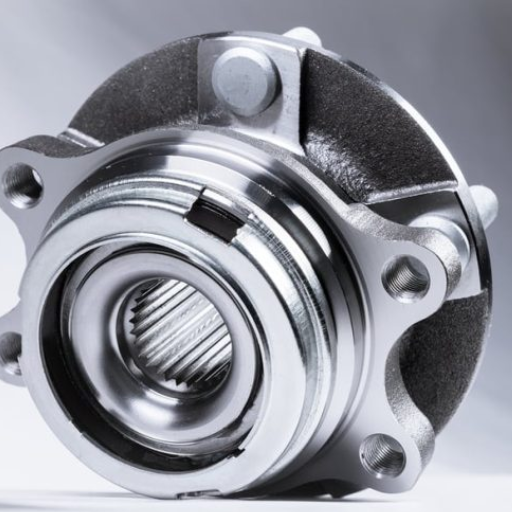
Because of their knowledge and experience, those in the automotive industry know that diagnosing problems and performing preventive maintenance is not only about being able to hear a sound and describing it accurately but also about being able to differentiate between the sounds generated by wheel bearings and tires. Here is the brief answer to the inquiry:
What is helpful is to understand at what times the noise one is hoping will give an insight into the difference between tire noise and bearing noise. Most people report that wheel bearing noise and other automotive noise is always present and varies with speed. It has been explained as a very low-pitched noise, somewhat like a rumble, which increases with speed. Tire noise is said to be more speed-dependent and directional and can be influenced by the nature of the road surface as well. It is described as a slight howling yelling sound that arises when the vehicle is being turned or pushed through a corner.
Thus, by the analysis of noise emanating from the automobile’s components, one can classify and eliminate the source of the noise which hinders the appropriate functioning of the vehicle.
Understanding Tire Wear Patterns
It is imperative, to appreciate the significance of tire wear patterns in terms of vehicle performance and safety. Wear patterns on your tires can give you indicators of how your tires are doing, as well as if there are any problems that are inherent. Here are some points worth remembering:
- Cupping or Scalloping: This describes an irregular wearing of the tire treads which causes either a cup or a wave like pattern across the edges. Scalloping signs may arise from some suspension components, improper alignment or improper inflation of a tire.
- Center Wear: It is the type of wear, where the middle of the tire tread has been worn down more than the edges of the tire. Most of the time this is due to an inflation if the tire center and not the edges.
- Edge Wear: This is the opposite of center wear, and it’s where the center of the tire treads are worn out less compared to the edges with a complete wearing of the center. Edge wearing is uterlly caused due to under inflation.
- Feathering: It is a scenario where one edge of the tread blocks becomes rounded and the other becomes sharp. It may be caused due to misalignment alone or lack of proper tire rotation.
In order to address problems beforehand, and to guarantee that they are able to maintain their tires well and to obtain the full lifespan from their tires, the drivers only need to see the regular inspection of the tires. If however, the drivers note any form of abnormal wear and tear of their tires, they should seek assistance from an expert.
Tests to Identify Wheel Bearing Symptoms
apply these tests to better recognize wheel bearing symptoms:
- Wheel Play Test: Raise the vehicle sufficiently but do not allow it to fall back on the ground axle, and consider the position of the tire at 12 and six o’clock. When trying to rotate the wheel in the back-and-forth direction, consider reasonable limits. Allowable eccentricity but most limits allowable makes it possible for a snug fit without a bearing nut having to be subjected to axial loads. Such a situation is enough to cause an impression of bearing rolling movement deterioration.
- Listening Test: During driving at normal cruising speed, this time keep checking for speech or noise from the wheels which is abnormal. One may hear a rumbling, a grinding, or a humming sound from the wheel due to worn out bearings which sound gets somewhat louder when the vehicle speeds up. Many times as one turns the vehicle, the considerable amount of noise heard or inaudible changes in number, mean something related to the wheel bearing.
- Visual Inspection: Check the wheel and tire for signs indicative of aggressive tire wear one may also look for the presence of tire wear which appears above normal for a straight line bearing a sharpe edge or pattern. Presence of uneven patterns indicates either excessive bearing wear from the wheel or damaged components along the axis of the suspension system mounted on the wheel.
As a reminder, in the event that you have a fear of a potential wheel bearing issue, you need to see a qualified professional with the right skills and experience. There they can suggest guidance and repair work to maintain the safety and optimal performance of your vehicle.
When Noise Gets Louder While Driving
In the event that the noise of the wheels is louder than the sound of the engine, this is a good sign of trouble, particularly with the wheel bearings. Wheel bearings are important parts that make sure the wheels rotate seamlessly and bear the weight of the car. Worn bearings or damaged ones produce several sounds that, at times, tend to get worse with an increase in speed. Addressing this problem as soon as possible is vital to both the safety of the driver and the efficiency of a vehicle. Given signs of a defect in the wheel bearings, the best course of action would be to seek the advice of an expert who is qualified to carry out an inspection and fix the damaged parts for you. Their knowledge and understanding of the probable causes of the defect and what solutions can be helpful will ensure you do not go off the road.
What Steps Should a Car Owner Take if a Wheel Bearing is Bad?
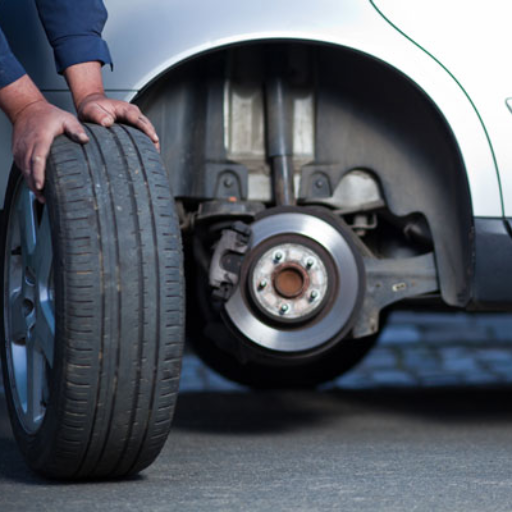
In the event that you find yourself with suspicion of a faulty wheel bearing in your car, then you should not hesitate to roll in the vehicle for repairs for your safety and also to ensure that there is no damage on the vehicle. Given that, here is what you should do as a car owner:
- Schedule an Inspection: Should there be any doubt regarding the state of your vehicle’s wheel bearings, qualified professionals or certified mechanics should be sought to thoroughly examine them. They are in a position to make pertinent recommendations that are relevant to repairs required.
- Avoid Driving Long Distances: If there is a suspicion regarding the wheel bearing being bad, driving ought to be limited, and long distances should only be traveled after the problem is resolved. Driving with defective wheel bearings leads to a lot more damage and puts the wearer at risk.
- Address the Issue Promptly:When the examination establishes that the wheel bearing is bad, the procedure for repair recommended should not be delayed. If someone ignores the problem, it will lead to more damage of other parts and endanger their safety while driving.
- Trust a Qualified Professional: While people may develop some confidence or sense of knowledge, and attempt to cause the repairs themselves, it is advisable that such repairs are done by professionals. They have the proper tools, know how to replace the faulty wheel bearing and have the experience needed to prevent the mistake.
Bear in mind that in ensuring your safety while driving, detecting and fixinga faulty wheel bearing is done in the most timely manner possible. So long as all the necessary measures are taken and a proper expert is consulted, the problem can be resolved and a proper trip can be taken without fears about safety.
Steps to Safely Jack Up the Car
here’s how to correctly ensure that your car’s wheel bearings are checked whilst jacking up the car:
- Choose a Level Surface: In achieving stability and safety, make sure to park your vehicle in a uniform and-smooth surface.
- Engage the Parking Brake: Regarding the transnational movement of the vehicle, set the parking brake so that the vehicle is deprived of motion.
- Locate the Jack Points: Take the manual of the vehicle and look for the jacking points, which are typically found on the body of the vehicle as markings or arrows.
- Position the Jack: Now, ensure that the jack is placed under the determined jacking point to lift the particular part without misplacing it.
- Lift the Vehicle: Then either pull and push the lifting handle or apply pressure on the hydraulic button, so that the vehicle gets lifted to an appropriate level according to your needs; until the desired wheel is above the ground.
- Secure the Vehicle: After having adjusted the height to your needs, then tuck the wheel stand beneath the frame that is behind the wheel giving additional support.
- Lower the Vehicle:Gently allow the jack handle to rotate and the pressure button, and never raise it above the level set previously while allowing the car to fall then induce opening order so that the specific wheel caters to the ground.
- Test Stability: Swipe the other side of the car with your hand to check if all three stands are holding firm under the vehicle, let alone the car, to never allow it to move.
Always handle a jack and lift a vehicle with great care as it can cause injury. It is always wise to read the user manuals and be careful to avoid injury to yourself or your car. On the other hand, if you are not sure or do not want to do it yourself, you look for a professional who can do it for you.
When to Consult a Garage with Carparts.com
I can share when one should explicitly get a garage with Carparts.com for a few specific situations:
- Unusual Noises Persist: When in the course of inspection and provisional checks, grinding, knocking, and other abnormal sounds continue emitting from the wheel bearings, it is advisable to seek the services of a garage for further examination and repair.
- Excessive Wheel Play: When there is considerable wiggle or movement of the steering wheel about its axis when it is turned in the side-to-side or up-and-down direction, it is prudent to have the wheel bearings” professional mechanic evaluate whether these are worn out or damaged.
- Lack of Experience or Tools: If no self-belief exists in carrying out the inspection or appropriate tools are missing, it is wise to leave the issue to a skilled auto mechanic who will treat any relevant problems in the wheel bearings and perform the necessary repairs or substitution.
Your safety and the proper functioning of your vehicle is critical, always keep this in mind. In case any doubts or worry arise concerning your wheel bearings, do not hesitate in reaching out to a nearby garage that you trust and knows how to deal with the problems in an efficient manner.
Reference
- Meineke: 6 Signs of a Bad Wheel Bearing – This resource provides detailed symptoms of a bad wheel bearing, including unusual noises and loose steering.
- Quora: Is there a temporary fix for a bad wheel bearing? – Discusses temporary fixes and the process of accessing the wheel bearing.
- YouTube: What Does a Bad Wheel Bearing Sound Like? – A video demonstration of the noise associated with a bad wheel bearing.
Frequently Asked Questions (FAQs)
Q: What are the common signs of a bad wheel bearing?
A: Common signs of a bad bearing include a grinding sound, droning noise, or squeal coming from the wheel or tire area. You might also notice wheel bearing play when rocking the wheel or scraping noise when driving at different speeds.
Q: How can I tell if the noise is coming from the front wheel bearing?
A: A bad wheel bearing noise coming from the front wheel can often be a droning noise or grinding sound. To pinpoint whether it’s coming from the front, you might hear the noise increase when turning the steering wheel from right to left. A test drive can also help identify the source.
Q: What should I do if I hear a grinding sound from my wheel?
A: If you hear a grinding sound, it’s important to check for wheel bearing issues. Jack, the car up, safely supports it, and spins the wheel by hand while listening for unusual noises. Inspect the axle and rotor for any signs of damage.
Q: Is it difficult to diagnose a bad wheel bearing?
A: Diagnosing a bad wheel bearing can be challenging, especially if the noise is similar to other issues. Using a stethoscope can help pinpoint the exact source of the noise, whether it’s the front or rear axle bearing.
Q: When should I consider getting a new wheel bearing?
A: You should consider a new wheel bearing if you experience consistent noise, wheel bearing play, or grinding sounds that indicate the bearing went bad. A mechanic can confirm if the bearing needs replacement.
Q: What causes a wheel bearing to go bad?
A: Wheel bearings can go bad due to lack of lube, exposure to water and dirt, or general wear and tear over time. A damaged CV shaft or knuckle can also lead to bearing issues.
Q: How does a bad wheel bearing affect driving?
A: A bad wheel bearing can cause vibrations, noise, and reduced handling. It can also lead to uneven tire wear or damage to the axle and rotor if not addressed promptly.
Q: Can a bad wheel bearing cause the car to pull to one side?
A: Yes, a bad wheel bearing can cause the vehicle to pull to one side due to increased friction in the affected wheel. This can also create uneven tire wear and affect vehicle alignment.
Q: What’s the difference between a front wheel bearing and a rear wheel bearing issue?
A: A front wheel bearing issue often produces noise that changes with steering input, while a rear wheel bearing issue might not vary with steering. Both can cause noise, but front or rear identification helps in diagnosing which bearing is affected.
